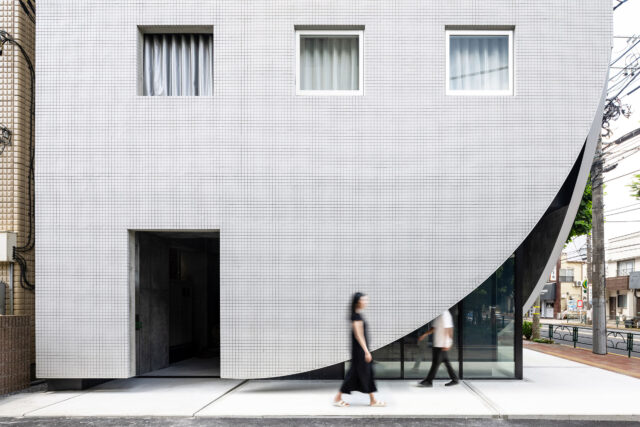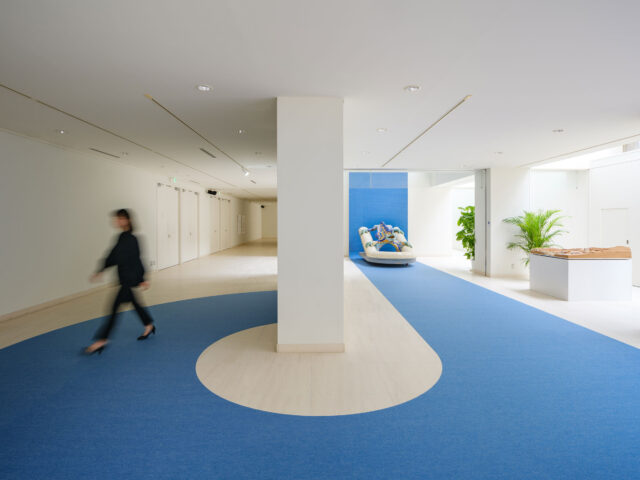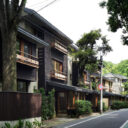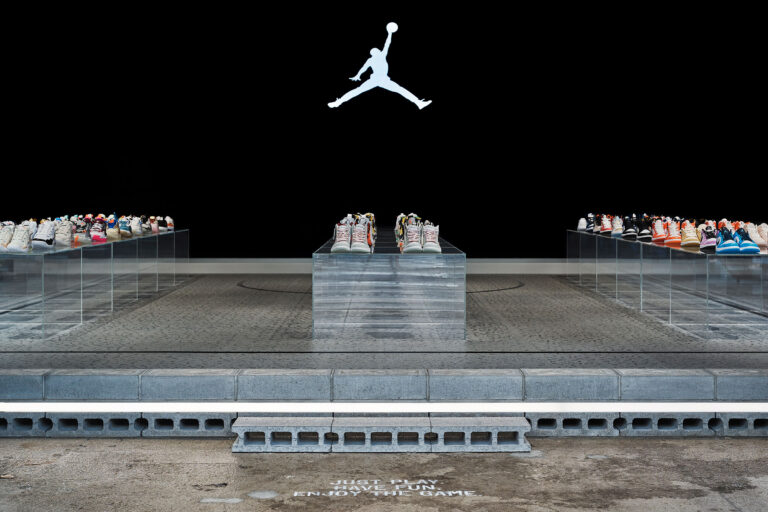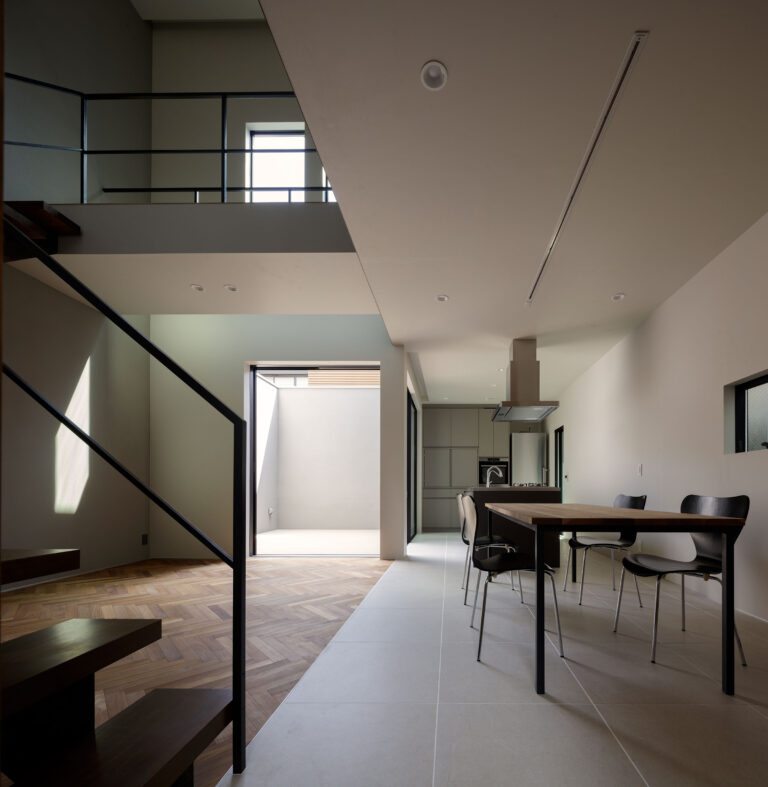
SHARE 山村健+ナタリア サンツ・ラヴィーニャ / YSLA Architectsによる、埼玉の住宅「Casa Eri」。若い施主家族の住宅で祖父母の家の傍らに計画、中庭に面するテラスが三世代の集う場として機能、家族が多目的に使い行為を共有する“ゴロゴロ・スペース”は未来の変化にも柔軟に対応



山村健+ナタリア サンツ・ラヴィーニャ / YSLA Architectsによる、埼玉の住宅「Casa Eri」です。若い施主家族の住宅で祖父母の家の傍らに計画、中庭に面するテラスが三世代の集う場として機能、家族が多目的に使い行為を共有する“ゴロゴロ・スペース”は未来の変化にも柔軟に対応します。
首都圏や地方を転々とした若夫婦が祖父母の近くに住むことを決めた。それがこの建築の始まりだった。
二人の子ども達がすくすくと育ち、祖父母と過ごす時間を増やしながら、二人の子どもたちを育てたいという思いから、祖父母の住宅が建つ敷地に新居を建てることにした。
Casa Eriの特徴の一つは、中庭に面したテラスである。内部と一体的に繋がったテラスは新居の中心的な場所となっている。家族の団欒の場所となり、天気の良いにはこのテラスでご飯を食べ、ここから庭に降りて遊び、寝転がりながら読書もできる。さらに、祖父母にとってもテラスは新たな空間であり、ふらっと立ち寄り孫と遊ぶこともできる。テラスは三世代が集う場所として設計している。
この家にはリビングという部屋はない。そのかわり「ゴロゴロ・スペース」と呼ぶ空間がある。ここでは、子どもが寝っ転がったり、子どもと寝っ転がったり、大人が昼寝としたり、もしくは年齢に関係なく勉強したり、読書をしたりする空間である。子どもが子ども部屋に閉じこもるのではなく、勉強や遊びや昼寝などの行為を皆で共有したいという願いのもとに生まれた空間である。また子どもたちが大きくなったら腰掛けて使うこともできる。未来への時間への変化に対して様々な使い方に柔軟に対応できるように設計している。
以下の写真はクリックで拡大します

















以下、建築家によるテキストです。
首都圏や地方を転々とした若夫婦が祖父母の近くに住むことを決めた。それがこの建築の始まりだった。
二人の子ども達がすくすくと育ち、祖父母と過ごす時間を増やしながら、二人の子どもたちを育てたいという思いから、祖父母の住宅が建つ敷地に新居を建てることにした。
Casa Eriの特徴の一つは、中庭に面したテラスである。内部と一体的に繋がったテラスは新居の中心的な場所となっている。家族の団欒の場所となり、天気の良いにはこのテラスでご飯を食べ、ここから庭に降りて遊び、寝転がりながら読書もできる。さらに、祖父母にとってもテラスは新たな空間であり、ふらっと立ち寄り孫と遊ぶこともできる。テラスは三世代が集う場所として設計している。
また、このテラスの一角には大きな石がある。これは祖父母か家族みんなで大事にしてきた家の記憶である。この大きな石が世代を超えた家族を結ぶ象徴となるように二棟の中心に据えた。
この家にはリビングという部屋はない。そのかわり「ゴロゴロ・スペース」と呼ぶ空間がある。ここでは、子どもが寝っ転がったり、子どもと寝っ転がったり、大人が昼寝としたり、もしくは年齢に関係なく勉強したり、読書をしたりする空間である。子どもが子ども部屋に閉じこもるのではなく、勉強や遊びや昼寝などの行為を皆で共有したいという願いのもとに生まれた空間である。また子どもたちが大きくなったら腰掛けて使うこともできる。未来への時間への変化に対して様々な使い方に柔軟に対応できるように設計している。
ゴロゴロ・スペースの端に書斎を設けた。書斎は引戸の開閉具合で、プライベートな個室としても、ゴロゴロ・スペースに開かれた部屋としても使うことができる。また前面にある公園への視線と採光のバランスを考慮し、出窓を斜めに振った。それによって、自然光が柔らかく入り込みつつも、外からの目線を気にせずに仕事に取り組める、心地よい空間となっている。
二階は片流れの屋根のもとに一家全員が寝られる寝室空間となっている。畳、襖、低く設けられた窓などは、伝統的な和の要素を残しつつも、色彩や意匠表現は現代的な抽象性を持たせたデザインにしている。ここに設計者としての数寄屋の意図がある。
■建築概要
名称:CASA ERI
所在地:埼玉県
主要用途:専用住宅
設計:YSLA Architects
構造:宮津裕次
施工:ワシン建築事務所
ステージング:Arieh Rosen & Noam Levigner
構造・構法:木造在来工法
基礎:べた基礎、木杭
階数:地上2階 地下0階
敷地面積:173.88m
建築面積:52.91m2
延床面積:76.29m2
各階床面積:一階52.91m2 二階23.38m2
最高高さ:6.90m
竣工年月日:2021年5月
写真:小野寺宗貴
| 種別 | 使用箇所 | 商品名(メーカー名) |
|---|---|---|
| 外装・屋根 | 屋根 | |
| 外装・屋根 | バルコニー | |
| 外装・壁 | 外壁、庇 | |
| 外装・床 | ウッドデッキ | 天然木ウッドデッキDE01017(サンワカンパニー) |
| 外装・床 | 外構 | 砕石敷き、既存庭石 |
| 外装・建具 | 窓 | |
| 外装・建具 | 玄関扉 | 鉄+塗装 |
| 内装・床 | 玄関、リビング、書斎 | シェンフローリング[プロヴァンスシェンプレミアムマット](IOC) |
| 内装・壁 | 玄関、リビング、書斎 | PB+AEP塗装 |
| 内装・天井 | 玄関、リビング、書斎 | PB+AEP塗装 |
| 内装・床 | 和室 | |
| 内装・壁 | 和室 | |
| 内装・天井 | 和室 | |
| 内装・建具 | 遮光カーテン | |
| 内装・建具 | レースカーテン | |
| 内装・家具 | 階段および飾り棚、書斎机 | ゴム集成材+AEP塗装 |
| 内装・家具 | 階段手すり | 木+AEP塗装 真鍮マット仕上げ[バイブレーターで研磨の上、塗装] |
※企業様による建材情報についてのご意見や「PR」のご相談はこちらから
※この情報は弊サイトや設計者が建材の性能等を保証するものではありません
Casa Eri is a house for a family with 2 kids. The family currently lived in an apartment in Tokyo but wanted to move out of the city center and closer to the grandparents’ house. After looking for a place to build their new house they decided to build it in the same plot as their grandparents.
We wanted to design the new house keeping the values of the existing grandparents’ house, views and sunlight. At the same time, we wanted to design an outdoor space for the families to encounter.
When we first visited the site, the owner brought us around the property to meet the neighbors. We start the visit going from the garden, went to the back patio, to the neighbor’s patio through the neighbor’s field… This relation between patios and garden was as fluid and natural as the relation between neighbors, as natural as the relation between families. We wanted to design a house that was part of this environment.
The grandparents’ house had a tatami room in the ground floor for the nieces to play and stay over. This was also the room in which every year the Hinakazari (Girl’s festival decoration) was displayed. We designed the new patio and the new house around this area, creating an outdoor space, a patio, in between the two houses. A place for the families to meet while keeping independence and privacy.
The living spaces of the house, the dinning and the “goro goro” space, were developed around this outdoor patio while the dormitory was placed in the second floor and designed as a tatami room. A work station was also designed in the ground floor with the possibility of being connected or isolated from the living areas and with special attention to the light and privacy.
Originally in Japanese “goro” symbolized the sound of something rolling, therefore goro goro can be used to talk about lying down or turning over. With the time goro goro came to mean lying down at home, spending time doing nothing special. That’s how we imagined the living area, the goro goro space, a flexible area in which each family member can decide what to do and how to do it. A fluid space to lay, to sit, to walk, to read, to paint, to watch, to do origami, ikebana,…or to do nothing. Placed in between the dining and the second floor dormitory this space adds a new dimension of distension in between night activities and daily functions. Is a place for the family, parents and children to relax, to come together, to exchange, to communicate, a space for active relaxation. Goro goro space is the place the children will remember in the future.
Casa Eri
Site: Saitama
Use: House
Design: YSLA Architects
Structure: Yuji Miyazu
Construction: Washin Architect office
Stage Creative Direction: Arieh Rosen & Noam Levigner
Structure: Wood
Foundation: Concrete Foundation,Wood Pile
Stories: Two stories
Plot area: 173.88m
Building area: 52.91m2
Floor area: 76.29m2
FAR: 43.88%(max 100%)
Area: 1F 52.91m2,2F 23.38m2
Height: 6.90m
Construction: May 2021
Photography: Munetaka Onodera

